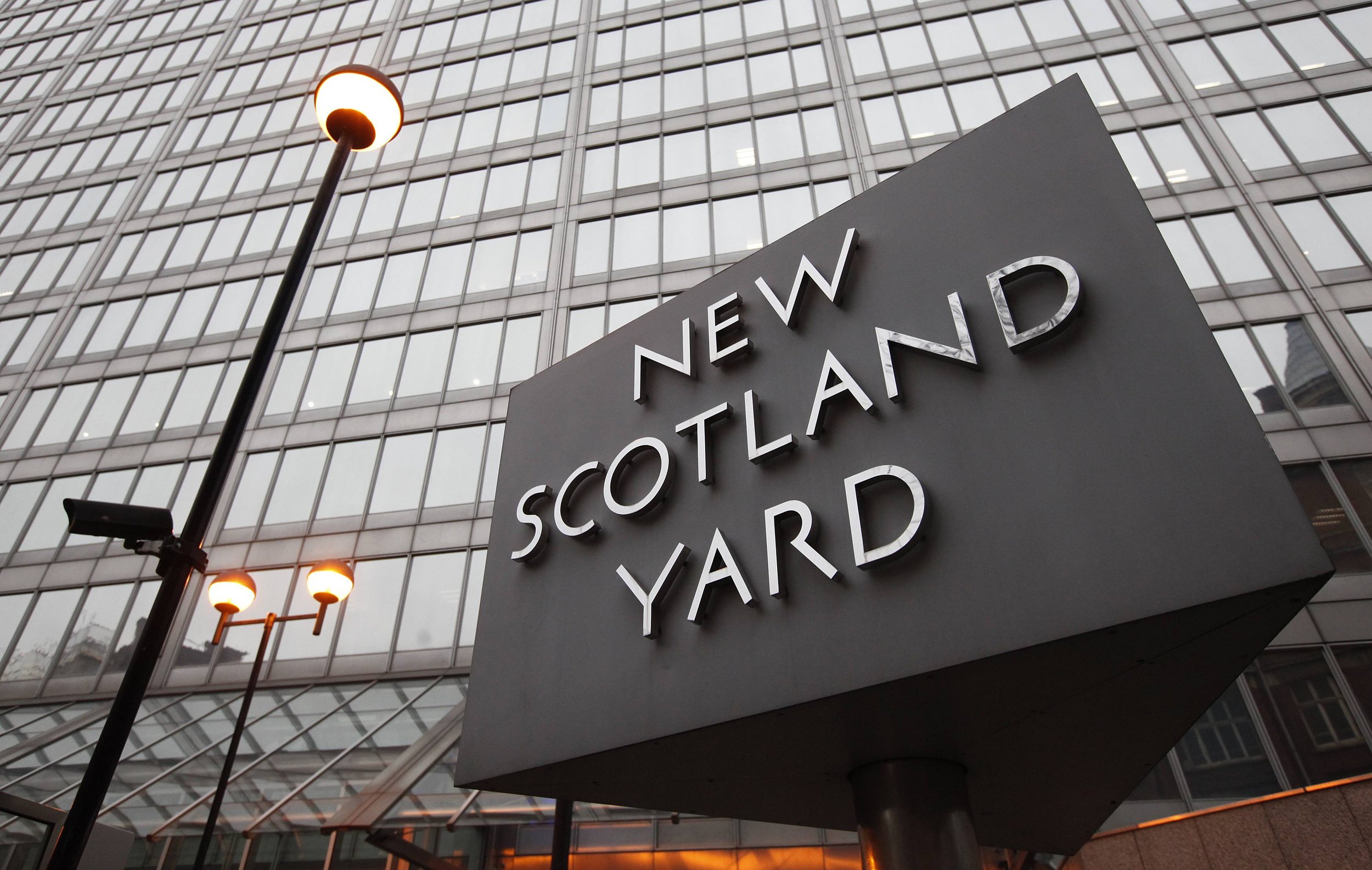Trapped in the UK's Surveillance Matrix
Scotland Yard, headquarters of London's Metropolitan Police. [Suzanne Plunkett/Reuters]
By Harry Stopes
Things were looking up for Stephen when he got out of Feltham, a youth prison in London.
Stephen (whose name has been changed for safety reasons) had been acquitted of the crime that kept him locked up for seven months and was quickly hooked up with a support worker who got him into community college, helped him renew his passport and even lined up his accommodation. He was “buzzing” with excitement, he later said, until his support worker called with bad news: Officers from London’s police Gangs Unit had flagged Stephen as a gang member, and his offer of public housing had been withdrawn. He didn’t find a place to live for another five months.
Because of his designation as a supposed gang member, Stephen’s name had almost certainly come up on a “Gangs Violence Matrix” run by London Metropolitan Police (known as the “Met”).
Established in 2012, the Matrix is a secret list of names of people the Met believe are associated with violent street gangs. Suspected gang members are assigned an algorithmically calculated risk score based on the number and severity of their prior offenses, as well as how recently they took place.
There’s no way to know for sure if a person has been added to the Matrix, but the severe consequences that can follow are often a clue. Because information from the Matrix is shared with a wide range of public sector agencies – including public housing landlords, youth workers, schools, probation services, child care agencies, job centers and immigration authorities – people who end up on the list can face school expulsion, difficulty finding or remaining in a home, and for non-nationals, possible deportation.
Police say that the Matrix is an important tool for the prevention of violence, but many of those on it have never been convicted of violent offenses and have been added to the list on the basis of questionable police intelligence. While the names are not public, the demographics of those on the list are: Of the 1,942 individuals currently in the database, 79% are Black. (For context, London’s population is around 13% Black, and Black people make up 27% of those convicted for so-called “serious youth violence offenses” in the city.)
Because of this, a 2018 report by Amnesty International called the Matrix “a racially discriminatory system that stigmatises young Black men.”
Now, Liberty, the UK’s largest civil liberties organization, has launched a legal action that could see the Matrix scrapped.
Liberty’s lawyers argue that the Matrix discriminates against people of color, especially Black people, and breaches the privacy rights of those on the list. “The police have known about the racial disproportionality of the Matrix for years,” Lana Adamou, Liberty’s lead lawyer on the Matrix case, told me. “And they’ve done nothing, as far as we can see, to eliminate it.”
These racial disparities are all the more sinister given the murkiness around how the Matrix operates. “There don’t seem to be any clear rules about how somebody ends up on it,” Adamou explained, “or what the quality of evidence has to be.”
In response to a query, police said that it requires “reliable intelligence from more than one source,” but researchers have raised questions about how this operates in practice. Police in three London boroughs told Amnesty that simply being related to someone on the Matrix, or being seen in their company, can be enough for a person to be added to the list. “We are not dealing with fact, it’s feeling,” one officer admitted. “A lot of people are labeled as gang members who are not.”
Police sometimes employ what they privately call “Achilles’ heel tactics,” such as going after a young person’s parents or family members for minor offenses, such as an unpaid TV license in order to pressure the young person to change their alleged criminal behavior. Such measures increase the marginalization and desperation of young people, Adamou argues, and contrary to the Matrix’s supposed goal, can “exacerbate the societal factors that lead to serious youth violence.”
Some researchers question whether it’s helpful at all to talk about gangs. Calling attention to how police have been known to trawl social media to map social connections between young people in London’s public housing projects, Amnesty concluded that “many of the signs used to identify ‘gang members’ reflect elements of urban youth culture and identity that have nothing to do with serious offending.” One senior police officer with decades of experience working on serious youth violence privately said that in his opinion that “gangs are, for the most part, a complete red herring … fixation with the term is unhelpful at every level.”
London is not the only city where police gang databases have come under criticism. In New York, the NYPD maintains a list of over 42,000 supposed gang members, almost all of whom are Black and Latino. The criteria for being added to the list are flimsy, often consisting of little more than dressing a certain way, living in a certain neighborhood or associating with others in a group. “The police are essentially criminalizing friendships,” an attorney at the NAACP Legal Defense and Educational Fund told The Intercept. New Yorkers for Social Justice have urged recently elected Mayor Eric Adams to create a task force to study whether the database violates New Yorkers’ constitutional rights.
Liberty’s case has implications that extend beyond the Matrix, Adamou argues. Though she hopes that the court will declare the Matrix to be unlawful, she fears that a narrowly focused ruling could permit the reemergence of something like the Matrix under another name.
A controversial “Police, Crime, Sentencing and Courts Bill” that is currently making its way through Parliament could do just this, as it will oblige a range of public bodies to share data with each other in the name of preventing “serious violence.” While policing by database and algorithm have been closely scrutinized in the United States, up until now the subject has been largely neglected in Britain. Adamou and her colleagues hope to change this.




